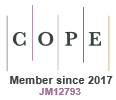Articles citing this paper
Perspectives on our planet in the Anthropocene
Jonathan Williams A B and Paul J. Crutzen AA Max Planck Institute for Chemistry, D-55128 Mainz, Germany.
B Corresponding author. Email: jonathan.williams@mpic.de

Prof. Jonathan Williams is an atmospheric chemist. He completed his B.Sc. and Ph.D. at the University of East Anglia, England, and after working as a postdoctoral researcher at the NOAA Aeronomy laboratory in Boulder, USA, he became a research group leader at the Max Planck Institute for Chemistry, Germany, with a focus on the investigation of the chemistry of volatile organic compounds (VOCs) in the atmosphere. He has participated in many international field campaigns on aircraft, ships and at ground stations. He is editor on several journals and recently co-authored the textbook The Atmospheric Chemist's Companion. |

Born in 1933 in Amsterdam, Prof. Paul J. Crutzen was trained as a civil engineer and worked with the Bridge Construction Bureau of the City of Amsterdam. In 1959 he joined Stockholm University (MISU) to study meteorology and atmospheric chemistry. His research has been especially concerned with the natural and anthropogenically disturbed photochemistry of ozone in the stratosphere and troposphere. Thereby he identified the importance of nitrogen oxides emitted by fossil fuel and biomass burning, especially in the tropics, as important sources of air pollution with potential impacts on ozone and Earth climate. He served as Director of Research at the National Center of Atmospheric Research in Boulder, Colorado, 1977–80, and thereafter, until his retirement in 2000, at the Max Planck Institute for Chemistry in Mainz. Until April 2008 he did part-time research at the University of California, San Diego, Scripps Institution of Oceanography. In 1995 he received the Nobel Prize for Chemistry for his work on atmospheric ozone. |
Environmental Chemistry 10(4) 269-280 https://doi.org/10.1071/EN13061
Submitted: 19 March 2013 Accepted: 27 May 2013 Published: 20 August 2013
This article has not yet been cited.


